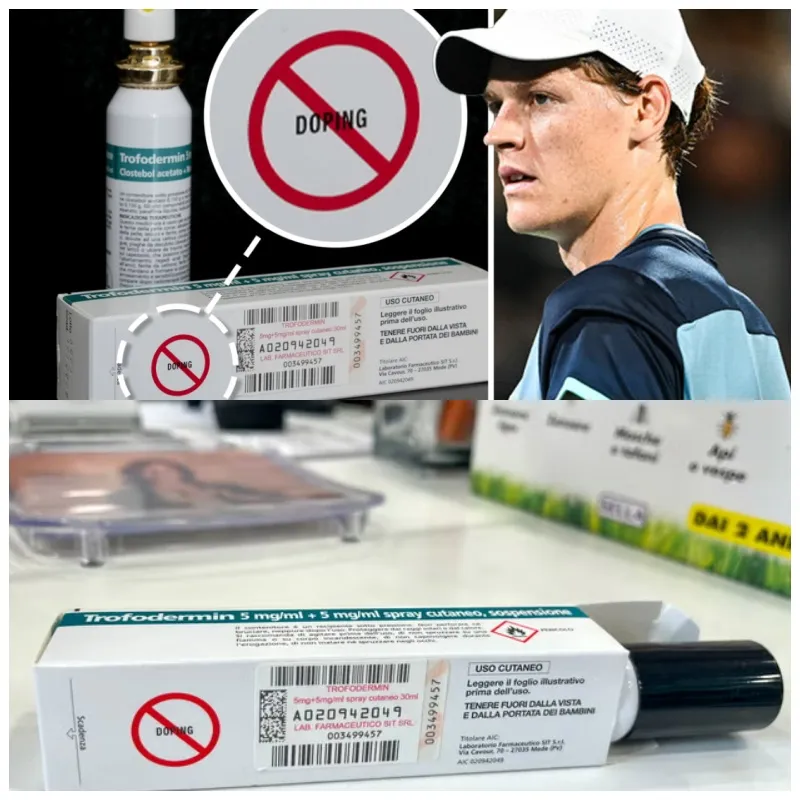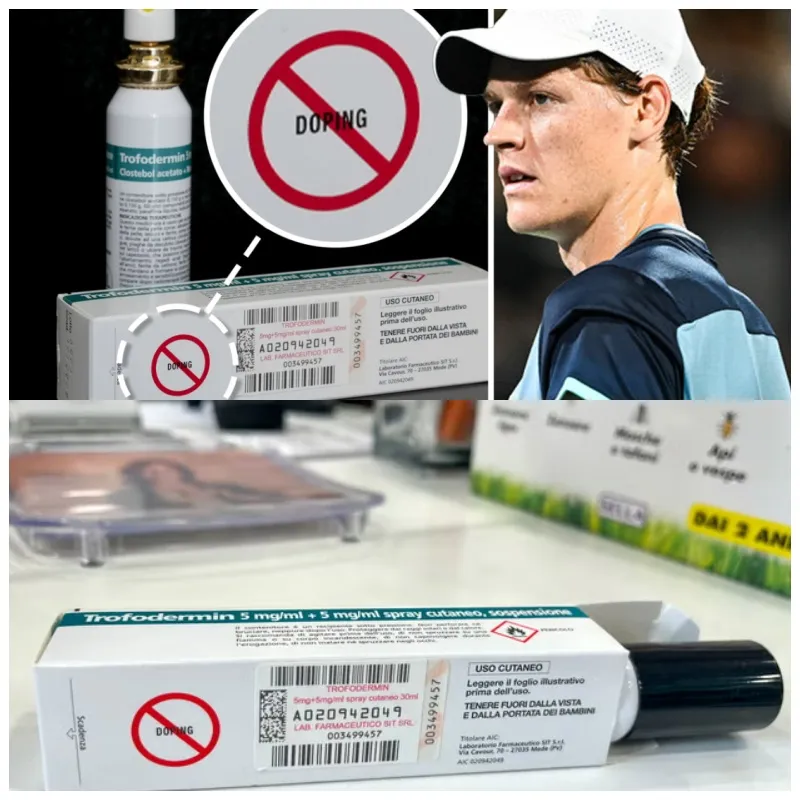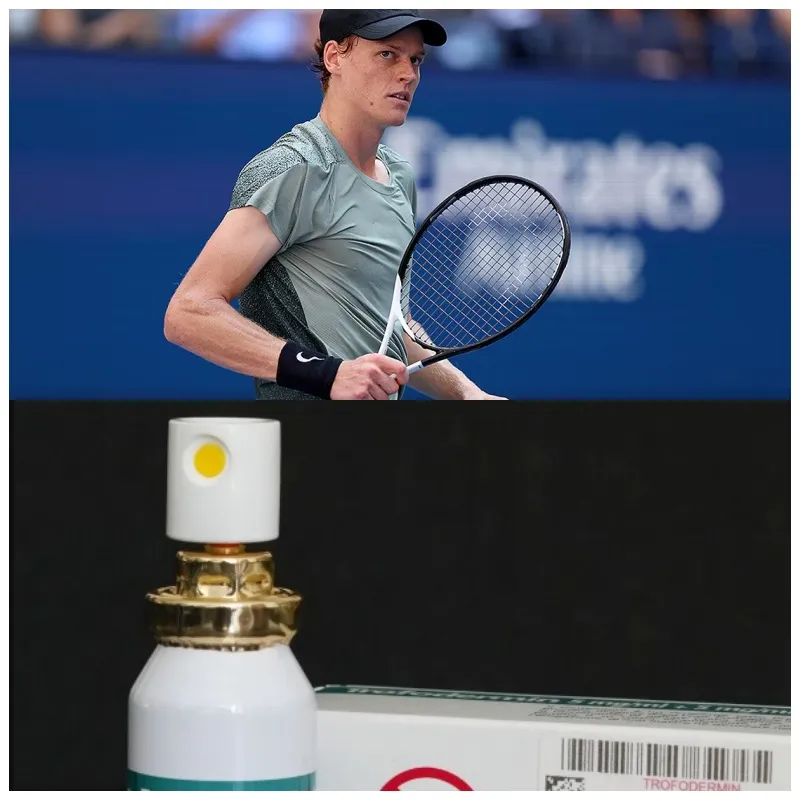
US Open: Spray that triggered Jannik Sinner’s failed drug tests bears a ‘DOPING’ warning.
The case surrounding Jannik Sinner’s failed drug tests has ignited significant debate in the tennis world, drawing attention to the complexities of anti-doping regulations and the unintended consequences athletes may face. Sinner, who is currently ranked No. 1 in the world of tennis, failed two drug tests in March due to the presence of Clostebol, a banned anabolic steroid. This occurred just months after his breakthrough victory at the Australian Open, which had propelled him to global prominence. Despite the failed tests, Sinner was ultimately cleared of any wrongdoing in July and was permitted to continue competing in the U.S. Open, where he is now preparing for a semifinal showdown against Jack Draper.
The source of the Clostebol, which led to the positive test results, was traced back to a product called Trofodermin, an over-the-counter spray sold in Italy. This spray, which is used to treat cuts and abrasions, contains Clostebol and is available without a prescription in Sinner’s home country. Crucially, the box for Trofodermin bears a warning label with the word “DOPING” printed inside a red circle, alerting users to the dangers of the substance in relation to anti-doping tests. The medication guide inside the packaging further warns that use of the product by athletes, without a legitimate medical need, could result in a positive anti-doping test.

However, what makes this case particularly alarming is the ease with which Clostebol can be unintentionally transmitted. Giovanni Fontana, an Italian lawyer who has represented numerous athletes in doping cases, explained that Clostebol can easily transfer from one person to another, especially if precautions such as wearing gloves are not taken. In Sinner’s case, his physiotherapist, Giacomo Naldi, used Trofodermin on a cut on his own hand and subsequently gave Sinner a massage without wearing gloves. This resulted in a trace amount of the banned substance being transferred to Sinner, which then showed up in his test results. According to Sinner, the spray had been purchased by his fitness trainer, Umberto Ferrara, who gave it to Naldi to treat his injury. This seemingly minor oversight set off a chain of events that ultimately led to the positive tests.
Upon learning of the failed tests, Sinner acted swiftly. He fired both Ferrara and Naldi, despite their long-standing roles in his team, a move that underscores the seriousness with which he approached the situation. “In my mind, I know that I haven’t done anything wrong,” Sinner said when addressing the issue. He emphasized his commitment to clean sport, noting that he has always respected anti-doping rules and will continue to do so. Nevertheless, the incident has cast a shadow over his career at a pivotal moment, with legal ramifications potentially on the horizon.
Fontana, who has handled multiple cases involving Clostebol and Trofodermin, stated that Sinner could pursue legal action against Ferrara and Naldi in Italy. He suggested that Sinner could seek damages for the negative impact the case has had on his reputation, as well as for the emotional distress and financial costs associated with fighting the doping charges. This would likely be a civil case, focusing on negligence or professional misconduct on the part of Ferrara and Naldi, given that they were responsible for introducing the banned substance into Sinner’s environment.

In addition to the possibility of a civil suit, Italy’s anti-doping agency, Nado Italia, may take further action. Fontana noted that in previous cases involving Trofodermin, Nado Italia had appealed decisions, even when the athlete had been cleared of intentional doping. This means that Ferrara and Naldi could face their own legal troubles, as Nado Italia has the authority to investigate their roles in the incident. Fontana pointed out that in 2018, a club doctor for an Italian soccer team was suspended for four years after administering Trofodermin to a player, indicating that such actions can carry severe consequences.
Sinner’s case also highlights the inconsistencies in how Clostebol is regulated around the world. In the United States, Clostebol is classified as a controlled substance, meaning it can only be obtained with a doctor’s prescription due to its potential for abuse. However, in Italy, it is readily available over the counter, making it more accessible to the general public, including athletes who may not be aware of its presence in certain medications. This disparity in regulation has prompted calls for greater awareness and education among athletes about the risks associated with common over-the-counter products.
The International Tennis Integrity Agency (ITIA), which conducted the investigation into Sinner’s positive tests, ultimately found that the amount of Clostebol in his system was negligible. Sinner illustrated this point before the U.S. Open by humorously using his fingers to count the number of zeroes in front of the “1” in his test results — a mere .000000001 — highlighting how minuscule the presence of the substance was. Nonetheless, even such a small amount was enough to trigger a positive result and set off a months-long investigation, demonstrating the stringent nature of anti-doping regulations.
For Sinner, this episode has been a learning experience, albeit a painful one. The situation has reinforced the importance of vigilance in all aspects of an athlete’s life, particularly when it comes to medical treatments and the substances they come into contact with. As he continues to compete at the highest levels of tennis, Sinner remains determined to uphold his reputation as a clean athlete and to move forward from this challenging chapter in his career. However, the broader implications of his case serve as a cautionary tale for athletes around the world, reminding them of the ever-present risks associated with doping regulations and the critical need for diligence in even the smallest details of their daily routines.






